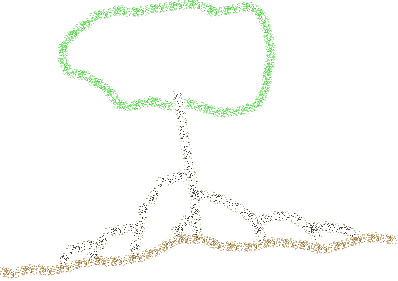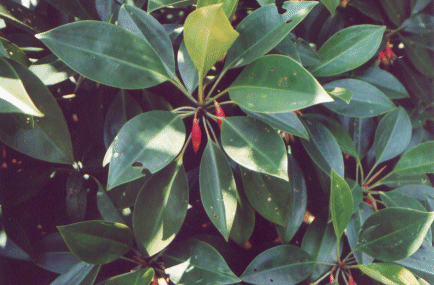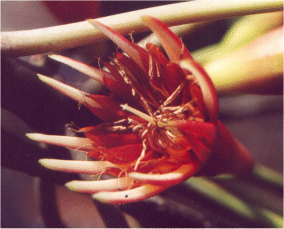
|
A field guide to Kenyan
mangroves
|
|
Bruguiera gymnorrhiza (L.) Lamk. 1797-8
Family: Rhizophoraceae
Distribution
The mangrove tree Bruguiera gymnorrhiza shows a very wide distribution,
occuring around the Indian Ocean and the West Pacific. In Kenya, Bruguiera
gymnorrhiza does not occur in distinct zones. It is mostly mixed in the
Rhizophora mucronata zone, but is usually
absent from the area nearest to the seaward edge. Within the forest, Bruguiera
gymnorrhiza can locally be present as the dominant species, but usually
as a patch than a zone. An exception on this distribution is Chale Island, in
Gazi bay. Chale Island is formed by the remains of a fossil coral reef. The
mangrove vegetation is dominanted by Bruguiera gymnorrhiza, up to 30
m tall (G. Kairo, personal communication). Read this
note about the spelling of Bruguiera gymnorrhiza.
| Leaves Leaves of B. gymnorrhiza have very similar colors as R. mucronata leaves, however are narrower and lack the mucron at the tip of the leaf. The absence of a mucron makes the B. gymnorrhiza leaf tip often curl to the underside of the leaf. Furthermore, the leaves appear thinner and more flexible than the R. mucronata leaves and do not have the cork warts (brown little dots) on the underside of the leaves |
 |
|
|
Root system B. gymnorrhiza typically develops knee roots. However, short aerial roots, which do not reach to the soil, are often present on the stems of trees in permenantly waterlogged conditions. Flowers Fruit |

References:
Tomlinson, P.B., 1986. The Botany of Mangroves. Cambridge University Press. Cambride Tropical Biology Series. 413 pp.